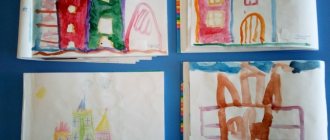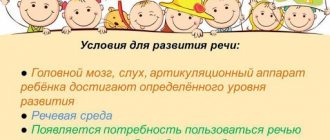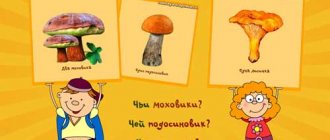Drawing up notes of generalizing conversations
At the last lesson, you and Zoya Ivanovna talked about the conversation and its meaning. Let's remember what a conversation is? So a conversation is considered as a purposeful discussion of something, an organized, prepared dialogue on a pre-selected topic. Conversation is considered in preschool pedagogy as a method of getting to know the environment and at the same time as a method of developing coherent speech.Right. And today we will talk about making notes of generalizing conversations. In order to correctly write a synopsis of a generalizing type, we need to create its structure. First of all, it includes the goal
The purpose of the general conversation is to systematize, clarify and expand the experience of children gained in the process of their activities, observations, and excursions. It should be noted that this type of conversation, to a greater extent, contributes to the development of dialogic speech, primarily due to the question-and-answer form of communication.
For example: the topic of the summary is Spring, and its purpose: to generalize and expand knowledge about spring.
The next structural component is tasks, as you know there are three types: educational, educational, developmental.
Please give me an example of each type of problem.
1. Improve dialogic speech. Clarify and systematize knowledge about the characteristic signs of spring (the days are getting longer, the sun is warming stronger, the snow is melting, water bodies are freed from ice, grass is growing, shrubs are turning green, flowers are blooming, insects are appearing, birds are returning).
2. Teach children to understand the connections between inanimate natural phenomena and seasonal types of labor. Introduce children to different springs: field, river, forest).
3. Evoke aesthetic experiences from the spring awakening of nature, show the beauty of spring. Instill interest in the artistic word.
The next part of the structure consists of methods and techniques.
Next is vocabulary work (introducing new words), preliminary work and material used in the lesson.
In this regard, let us dwell in more detail on the methodology for conducting a generalizing conversation. Let's consider the most important issues for guiding the conversation: selecting content, determining the structure of the conversation and the nature of the questions, using visual material and an individual approach to children.
When planning a conversation, the teacher outlines a topic and selects appropriate content. The content of the conversation is determined by the observation process. What and in what order children will notice and what they will say cannot be predicted in advance. Children, observing, express their thoughts in the form of individual remarks and individual words. An exchange of views takes place. During the conversation, the teacher’s word plays an explanatory role, revealing the content of the material that children perceive. During the observation process, the teacher directs the children’s perception and maintains interest in observation. Taking into account the experience and ideas of children, cognitive (the amount of knowledge to consolidate and new material) and educational tasks are determined; volume of vocabulary to activate.
For example, in a conversation on the topic “Who builds a house” (preparatory group for school), knowledge about the work of builders, about their professions can be consolidated and new knowledge about the profession of an architect can be imparted. The program content must include the task of developing speaking skills, the ability to speak out in a team, prove one’s point of view, and provide for educational tasks: instilling respect for working people; nurturing a culture of verbal communication.
It is possible to systematize knowledge in a conversation provided there is a clear, consistent arrangement of the material, i.e., with its correct structuring. E. I. Radina identified such structural components of the conversation as:
evoking a living image in the minds of children at the beginning of a conversation based on memories of phenomena close to life experience;
analysis of these phenomena during the conversation, highlighting the most significant details leading to conclusions;
an elementary generalization that clarifies children’s ideas, contributes to the development of an appropriate attitude towards phenomena and stimulates children to engage in certain behavior in the future.
The beginning of the conversation should be figurative, emotional, restore in children images of those objects and phenomena that they saw, mobilize children, quickly gather their attention and arouse interest in the upcoming lesson, arouse a desire to participate in the conversation. You can start a conversation in different ways - with a memory, with a teacher’s story, with looking at a toy or object. As an emotional means, you can use a picture, a riddle, a poem that is directly related to the topic of the conversation.
So, a conversation about autumn can be started with the question “Why is autumn called golden?”, a conversation “About the culture of behavior” - also with a question that contains an element of problematic: “What kind of person can be said to be cultured, polite?” For a conversation about Moscow, showing a painting or photograph depicting the Kremlin and Red Square can be a good start. You can start a conversation about winter with a riddle: “Snow on the fields, ice on the rivers, a blizzard is walking. When does this happen?
In the main part of the conversation, during the analysis of phenomena, its content is revealed. To this end, children are consistently asked questions that activate their thinking and speech activity. The teacher gives explanations, confirms the children's answers, generalizes them, makes additions and amendments. The purpose of these techniques is to clarify the child’s thought, to more clearly emphasize the fact, and to arouse a new thought. Children are given new information in order to clarify or deepen their knowledge about the essence of a phenomenon, about objects, etc. The success of the conversation is ensured by the liveliness and emotionality of its conduct, the use of poetry, riddles, visual material, the participation and activity of all children in the group.
The main part of the conversation may have several logically complete parts. This clarification was introduced into the structure of the generalizing conversation by V.I. Loginova. It identifies certain semantic logical parts, each part ends with a generalization by the teacher.
In the conversation “About Mom,” for example, three semantic parts can be distinguished: the mother’s work in production, the mother’s housework, and the children’s help to the mother. In a conversation about school: school building and classroom, teaching and teachers, school supplies, September 1 to school.
The end of the conversation is characterized by a certain finality. Most often it is associated with generalizing conclusions throughout the conversation. The ending of the conversation may vary depending on its nature and content.
The conversation can be ended with a riddle, reading a poem, a proverb, or listening to a tape recording related to the topic of the conversation.
Now I will give you a list of topics and you choose the topic you like to write a summary
Topics reflecting phenomena of social life: “Our kindergarten”, “Moscow is the capital of our Motherland”, about school, about our hometown, about what we saw at the post office, etc.
Topics of work: the work of parents, kindergarten employees, the work of a postman, a builder: the results of labor, labor processes (how clothes are sewn, fruits and vegetables are grown); housework of mothers and grandmothers.
Conversations reflecting the work of the children themselves: “We are on duty,” “How we help mom,” “What we grew in our garden.”
Conversations about the use of technology in household work: “What machines help do in kindergarten”, “How machines help build a house”, “What people drive and transport goods”, “What river transport we saw on our river”.
A series of conversations on everyday topics: about toys, dishes, clothes, school and washing supplies.
Conversations about nature: “Our park in spring”, “Wintering and migratory birds”, “Seasons”, “Fruits and vegetables”.
Conversations on moral and ethical topics: about the culture of behavior, “Respect the work of your elders,” “Be a good friend.”
Now let's start drawing up notes, if anything is unclear, ask. We'll give you 30 minutes, then we'll analyze your notes.





